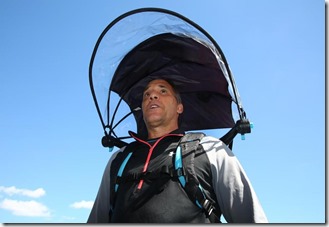In 1990, the US put a bit of pay-for-play into law by instituting the EB-5 visa program, under which foreign nationals can get themselves and their families a resident visa if they invested a certain amount of money and produced a certain number of jobs (10, in fact) for US workers. The entry price was $1M, unless they were willing to set up shop in a targeted (I.e., economically depressed) area.
Sounded good to Venezuelan businessman Pedro Brito, who had been robbed and threatened a couple of times. That was before his daughter was carjacked. Brito and his wife said suficiente and started looking around for opportunities to get out of Caracas and into America.
Their explorations led them to a Florida immigration attorney who put him in touch with a couple of hombres doing business in the great state of Vermont.
One was Bill Stenger, the chief executive of Jay Peak Resort, a family destination perched on a mountain in Vermont’s Northeast Kingdom region. The other was Ariel Quiros, the Miami businessman who owned the property. (Source: Bloomberg)
For those unfamiliar with the Northeast Kingdom, it’s just about as far north as you can go. Think a smidge south of the polar ice cap. Think almost in the Hudson Bay Colony. Think no one up there. Think nothing doing. Well, almost nothing doing. Former Red Sox pitcher, and eccentric throw-back hippy par excellence Bill “Spaceman” Lee, lives up there.
A decade earlier, Jay Peak had consisted only of a ski area and a roach-ridden lodge. Now it had three hotels, six restaurants, some 200 cottages, an indoor water park, an ice rink, a spa, and a convention center, all tended to by 600 employees.
I can’t imagine it does much of a convention business, but as a ski destination, I’m sure it’s fine, if a bit far out. And three hotels and a spa sure beats a roach-ridden lodge. (At least it wasn’t a bed bug-ridden lodge.)
The re-do of Jay Peak was brought to us – to the tune of $280 million – by the EB-5 program. “The only faster way to become an American is to marry one.”
We welcome approximately 10,000 EB-5 visa holders each year, most from China, most wealthy enough to easily part with $1M. For others, like Brito, the price of entry is pretty much everything they own. And for Brito, the $500K he had in his pocket after selling his home and cashing out his retirement (along with money from 160 other investors) ended up not as an investment in an indoor water park, but in a biotech center in Newport that:
…would manufacture artificial organs and offer stem-cell therapy, with 50 sterile rooms for research.
Hey, kids, let’s put on an artificial organ factory!
To make a long story short: SEC. Fraud. Intermingled funds. Scheme. Shell game. Investigation.
But I’m going to stick with the one thing that just leaps out at me: what made anyone think that a biotech center in Newport, Vermont was at all feasible to begin with?
I live in a biotech center. It’s part of a metropolitan area with 4.5 million people. Some of the world’s finest research universities. Some of the world’s best hospitals. Etc..
We’re hearing all the time about everyone being able to work from everywhere these days. That’s all well and good, but there are such things as labs. And there are such things as wanting to live in an area where there are a lot of people doing the same sorts of thing you’re doing. Lots of employment opportunities if company A turns out not to your liking. Lots of people to share ideas with. Lots of nerdy, brainy scientists. Thus are formed clusters.
Exactly how does a cluster – of the positive sort of cluster that Boston bio-tech represents – form in Newport, VT, population 4,500 – one one-thousandth that of the Boston area. Newport, VT. Where one of the biggest employers in town is a state prison.
Talk about a cluster…
On the upside, Pedro Brito is good-to-go visa-wise: his wife has gotten a student visa. And he’s optimistic about getting his $500K back. Fortunately, he had enough left over to open himself an ice cream shop in Florida, where the Britos are living. Easier on the Venezuelan bones than Newport, VT, I’m guessing.
Welcome to America, Mr. Brito!
 g a purchase - although, at $49.99 plus shipping, that's a good 5 or 6 crappy, fall-apart umbrellas from Filene's....
g a purchase - although, at $49.99 plus shipping, that's a good 5 or 6 crappy, fall-apart umbrellas from Filene's.... 

